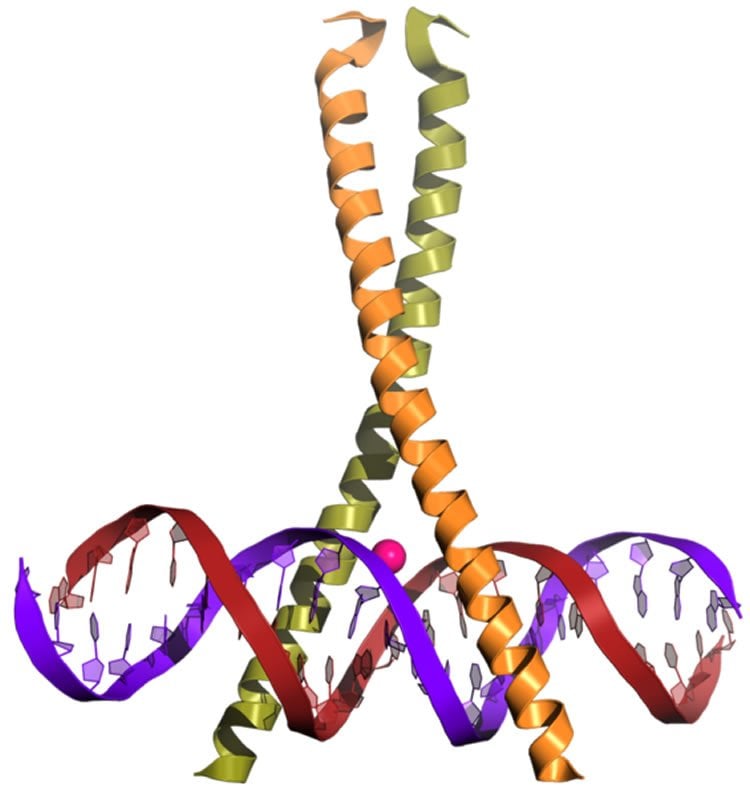Summary: Researchers have identified a compound that appears to enhance long term memory.
Source: ACS.
Memory acts like an anchor, reminding us of past experiences that have made us who we are today. Attempts to boost it, particularly as we age, have sprouted cottage industries of supplements and brain games. In parallel, researchers have been pursuing pharmaceutical interventions. In some of the latest work on this front, one team reports in ACS Chemical Neuroscience that they have identified a novel compound that enhances long-term memory in animal studies.
In the past two decades, scientists have discovered key molecular paths that can lead to the formation of long-term memories in fruit flies, mice and rats. For example, the activation of a particular protein called CREB — which stands for “cAMP response element binding” — is required to stow memories for the long term. Building on this finding, Alan P. Kaplan and colleagues have been working to find compounds that help spur CREB into action.
The researchers screened thousands of small molecules for potential drug candidates that activate CREB and found a compound called HT-0411 that was promising. Further testing showed that HT-0411 doesn’t directly activate CREB. It does so indirectly by inhibiting the enzyme monoamine oxidase B, which modulates dopamine and ultimately leads to CREB-mediated gene expression. The researchers then tweaked parts of that compound’s structure and administered it to mice and rats. In memory tests, the animals that received the candidate molecule scored much higher than the control group, and they showed no signs of behavioral side effects such as changes in anxiety levels.

Funding: The authors acknowledge funding from Dart NeuroScience LLC.
Source: Katie Cottingham – ACS
Image Source: NeuroscienceNews.com image is credited to Yikrazuul, licensed CC BY SA 3.0.
Original Research: Abstract for “Identification of 5-(1-Methyl-5-(trifluoromethyl)-1H-pyrazol-3-yl)thiophene-2-Carboxamides as Novel and Selective Monoamine Oxidase B Inhibitors Used to Improve Memory and Cognition” by Alan P. Kaplan, Terence Keenan, Roderick Scott, Xianbo Zhou, Rusiko Bourchouladze, Andrew J. McRiner, Mark E. Wilson, Darlene Romashko, Regina Miller, Matthew Bletsch, Gary Anderson, Jennifer Stanley, Adia Zhang, Dong Lee, and John Nikpur in ACS Chemical Neuroscience. Published online August 31 2017 doi:10.1021/acschemneuro.7b00282
[cbtabs][cbtab title=”MLA”]ACS “Unlocking the Mysteries of Memory, and Potentially Enhancing It.” NeuroscienceNews. NeuroscienceNews, 27 September 2017.
<https://neurosciencenews.com/memory-enhancement-7594/>.[/cbtab][cbtab title=”APA”]ACS (2017, September 27). Unlocking the Mysteries of Memory, and Potentially Enhancing It. NeuroscienceNews. Retrieved September 27, 2017 from https://neurosciencenews.com/memory-enhancement-7594/[/cbtab][cbtab title=”Chicago”]ACS “Unlocking the Mysteries of Memory, and Potentially Enhancing It.” https://neurosciencenews.com/memory-enhancement-7594/ (accessed September 27, 2017).[/cbtab][/cbtabs]
Abstract
Identification of 5-(1-Methyl-5-(trifluoromethyl)-1H-pyrazol-3-yl)thiophene-2-Carboxamides as Novel and Selective Monoamine Oxidase B Inhibitors Used to Improve Memory and Cognition
Initial work in Drosophila and mice demonstrated that the transcription factor cyclic adenosine monophosphate (cAMP) response element binding protein (CREB) is a master control gene for memory formation. The relationship between CREB and memory has also been found to be true in other species, including aplysia and rats. It is thus well-established that CREB activation plays a central role in memory enhancement and that CREB is activated during memory formation. On the basis of these findings, a phenotypic high-throughput screening campaign utilizing a CRE-luciferase (CRE-Luci) SK-N-MC cell line was performed to identify compounds that enhance transcriptional activation of the CRE promoter with a suboptimal dose of forskolin. A number of small-molecule hits of unknown mechanisms of action were identified in the screening campaign, including HT-0411. Follow-up studies suggested that the CREB activation by HT-0411 is attributed to its specific and selective inhibition of monoamine oxidase B (MAO-B). Further, HT-0411 was shown to improve 24 h memory in rodents in a contextual fear conditioning model. This report describes the lead optimization of a series of 5-(1-methyl-5-(trifluoromethyl)-1H-pyrazol-3-yl) thiophene-2-carboxamides that were identified as novel, potent, and selective inhibitors of MAO-B. Extensive SAR studies and in vivo behavioral evaluations of this and other related analogue series identified a number of potential clinical development candidates; ultimately, compound 8f was identified as a candidate molecule with high selectivity toward MAO-B (29–56 nM) over MAO-A (19% inhibition at a screening concentration of 50 μM), an excellent profile against a panel of other enzymes and receptors, good pharmacokinetic properties in rodents and dogs, and efficacy in multiple rodent memory models.
“Identification of 5-(1-Methyl-5-(trifluoromethyl)-1H-pyrazol-3-yl)thiophene-2-Carboxamides as Novel and Selective Monoamine Oxidase B Inhibitors Used to Improve Memory and Cognition” by Alan P. Kaplan, Terence Keenan, Roderick Scott, Xianbo Zhou, Rusiko Bourchouladze, Andrew J. McRiner, Mark E. Wilson, Darlene Romashko, Regina Miller, Matthew Bletsch, Gary Anderson, Jennifer Stanley, Adia Zhang, Dong Lee, and John Nikpur in ACS Chemical Neuroscience. Published online August 31 2017 doi:10.1021/acschemneuro.7b00282






